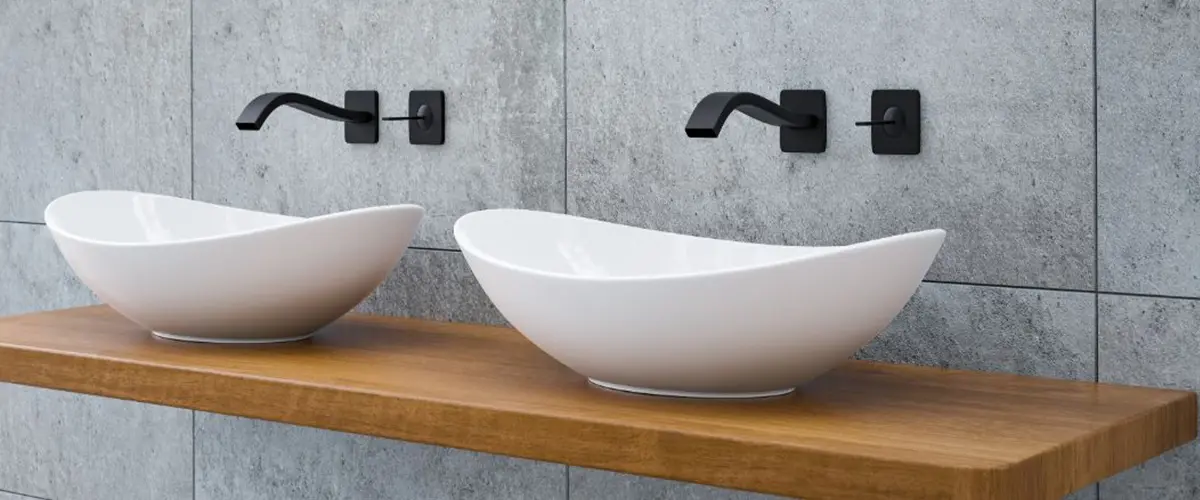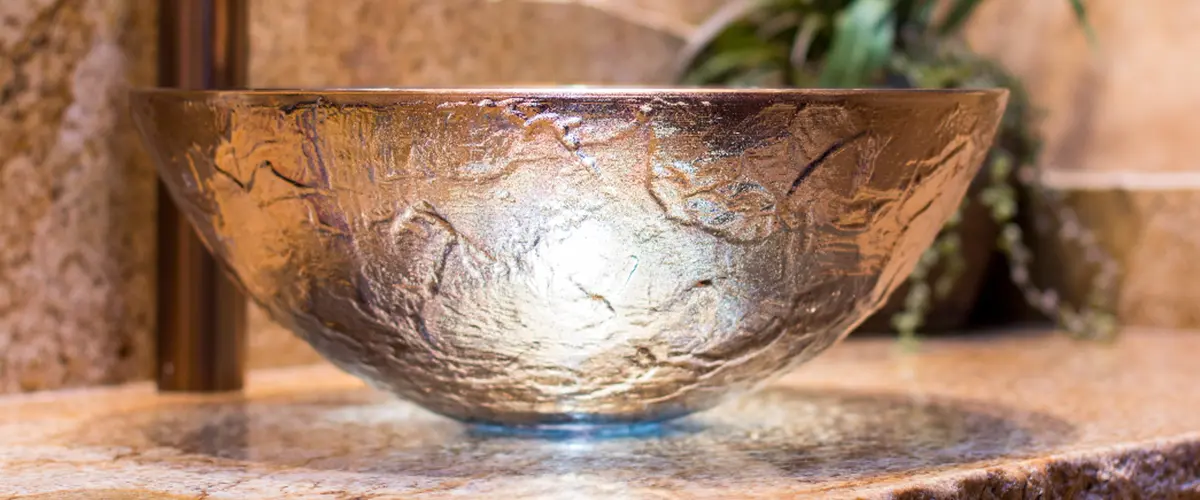Have you considered a vessel sink for your bathroom but not sure about what are the pros and cons of vessel sinks?
A direct descendent of the original washbasins, vessel sinks can become the showy centerpiece of your next bathroom remodel.
They lend a high-end panache to any décor and can dramatically change the look of an old, traditional bathroom vanity area.

What Is A Vessel Sink?
Vessel sinks are bowl-like sinks that sit higher than the surface of your bathroom vanity countertop. Some may be partially recessed, while others rest entirely on top of the counter.
Available in several styles, designs, and materials, many= vessel sink basins have the familiar bowl shape. However, you can also find alternative shapes such as rectangular, square, or nearly flat.
Popular materials include glass, hammered copper, brushed nickel, concrete, stone, porcelain, and even wood, with designs that can turn an ordinary bathroom sink into something approaching a work of art.
What are the Pros And Cons Of a Vessel Sink
Combining beauty with functionality, vessel sinks are not suited for every application. Before adding one to your bathroom, consider the pros and cons of vessel sinks.
Pros of Vessel SInks

- Stylish and Imaginative. A vessel sink is a conversation piece. The accompanying faucet can also enhance the final design, limited only by imagination. Some homeowners favor classic designs, sometimes with an artistic flair. Others may choose repurposed pottery or vintage basins coupled with a unique or heirloom piece of furniture serving as the vanity cabinet.
- Versatile. Though usually shaped like a bowl, rectangular shapes are also becoming very popular. Edges can be boxy or flared. Combined with the selected faucet, vessel sinks can skew towards sleek or substantial, modern or primitive. They can be wholly above-counter or slightly recessed, situated on a floating vanity or one that reaches the floor. Few other sink options offer such endless variety.
- Changeable. Vessel sinks are much easier to swap out than a traditional under-mount sink. If you tire of one after a few years, your contractor or plumber can easily swap it for a new one with an entirely different shape or material.
- Comfortable. Vessel sinks are more ergonomic than traditional bathroom sink varieties. Most bathroom vanities are between 32-34 inches tall. Add to that the vessel sink, rising 2-6 inches above the countertop. Even though the vessel sink is installed at the height best suited for its primary users, the above-counter design increases the comfort level for users of various heights.
- Easy to Install. Vessel sinks are perhaps the easiest sink type to install. Most don’t even require a countertop cut out—just a small hole for the drain. Almost anyone can learn how to install a vessel sink.
- Spacious. Vessel sink models often have an airy look, especially those made of clear glass. Compared to drop-in or under-mount sinks, vessel sinks free up counter space and leave more room for bathroom storage in the under-vanity cabinet.
Cons of Vessel Sinks

- Splashing. Perhaps the most common complaint about vessel sinks is that they are prone to splashing. You can resolve this by having a professional assist with faucet selection. The faucet’s height, reach, and placement will directly impact splashing. Choosing an aerated faucet is also essential to creating a naturally non-splashing water stream.
- Cleaning. Vessel sinks may require extra cleaning and maintenance, given that they have two visible surfaces. This is especially true with glass and plastic designs, which usually show water spots. A long, thin brush or simple cleaning rag wedge is helpful to clean between the sink base and countertop.
- Price. Not so long ago, vessel sinks were exclusively for elite, high-end installations. Many people still believe that vessel sinks are more expensive than under-mount models because they still have the aura of affluence. In reality, vessel sinks have entered the mainstream, and you can find options for practically any budget. Name-brand models are available for as little as $100-125, although the average is about $235. High-end models reach the $1,200 range. (These prices do not include installation, faucet, or vanity.)
- Stability. Vessel sinks need proper installation to avoid stability issues. You might also have problems with young children attempting to pull themselves up by grabbing the sides of the sink. If the bathroom is going to have significant usage by younger children, choosing a partially recessed vessel sink (to bolster stability naturally) would be wise.
- Durability. Vessel sinks can be more prone to chipping or damage due to their exposed edges. While not a significant concern with sturdy materials such as copper and concrete, it’s a consideration for glass, porcelain, and similar materials.
Other Considerations

Faucets. Since they sit above the countertop, vessel sinks require taller bathroom faucets. Faucet heights of four inches or greater are essential to provide ample clearance for the sink bowl. Unlike standard bathroom sinks, the vessel sink does not have an overflow relief drain, and faucets are entirely separate.
Think of the faucet as jewelry for your sink. Dress things up with a well-chosen faucet model. Simple, clean sink designs look elegant paired with a sleek, tall vessel faucet. You might also go for a more ornate look by choosing a faucet with decorative detailing or a waterfall that cascades water into the sink.
Accessorizing. Vessel sinks with a round or curved bottom need a mounting ring for stability purposes. This sink style also needs a pop-up drain compatible with sinks that don’t have overflow drain holes. Clear and translucent vessel sinks will reveal the mounting ring, so you may want to coordinate the ring finish with the faucet or, conversely, choose the contrast of a bold, bright color finish.
Conclusion
Vessel sinks offer a stylish and versatile addition to bathroom decor, with various shapes and materials to choose from.
They provide a spacious and ergonomic design, easy installation, and the option to change them over time. However, potential drawbacks include splashing, extra cleaning for some materials, and varying price ranges.
Stability and durability can also be factors to consider. Before opting for a vessel sink, weigh these pros and cons to determine if it suits your needs and budget.
Contact Us At A.M. Pellak Construction To Create Your Perfect Space
Your bathroom should be a sanctuary from the outside world. Vessel sinks add an elegant aura to any bathroom remodeling project. At A.M. Pellak Construction, we offer vessel sinks individually and as part of vanity sets. We install sinks them on wall-mounted vanities and more traditional floor-standing models.
A.M. Pellak Construction is a Pennsylvania family-owned and operated business serving Delaware, Montgomery, Chester Counties, and The Philadelphia Main Line since 2006. We’re a leader in the bathroom remodeling industry, and we offer a complete, premium service for our customers.
Our expertise, knowledge, and skill—combined with our unique design, building, and renovation approach—have made us a leader in the Eastern Pennsylvania construction industry.
Contact our team at A.M. Pellak Construction today for a free estimate on your next bathroom remodel. Or call us today at (610) 543-2479 and let’s discuss your next project!
